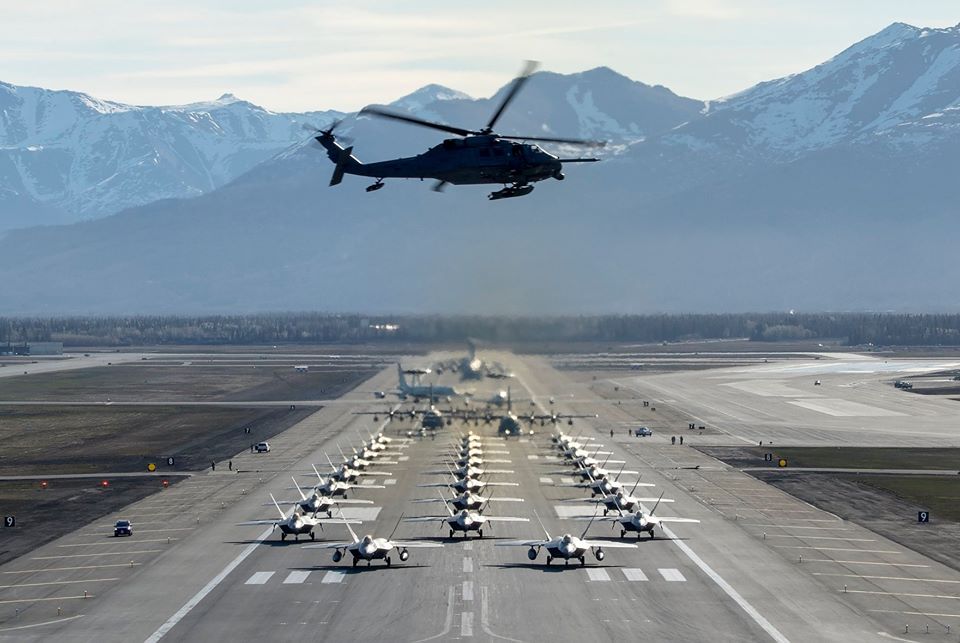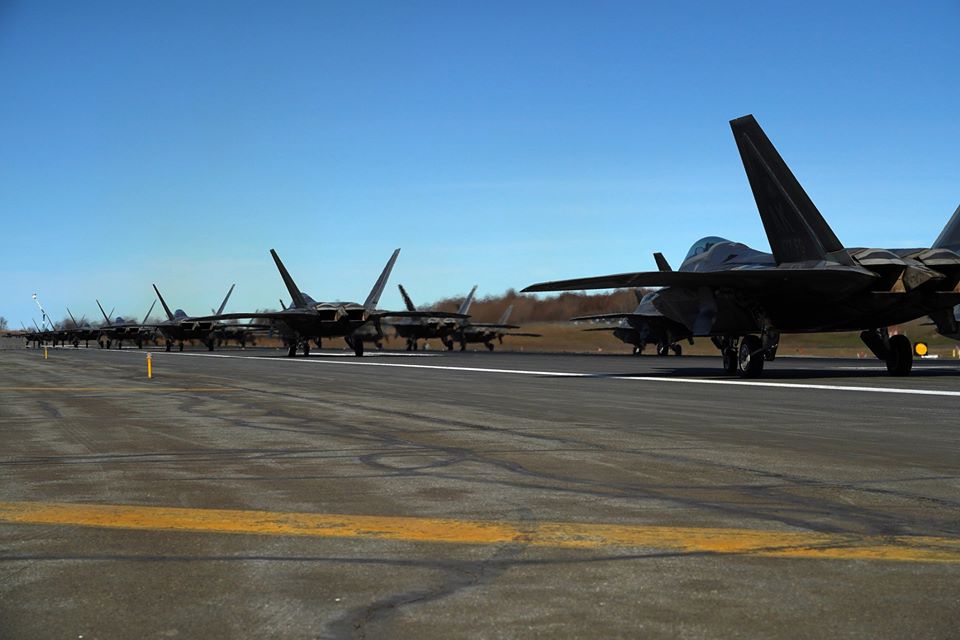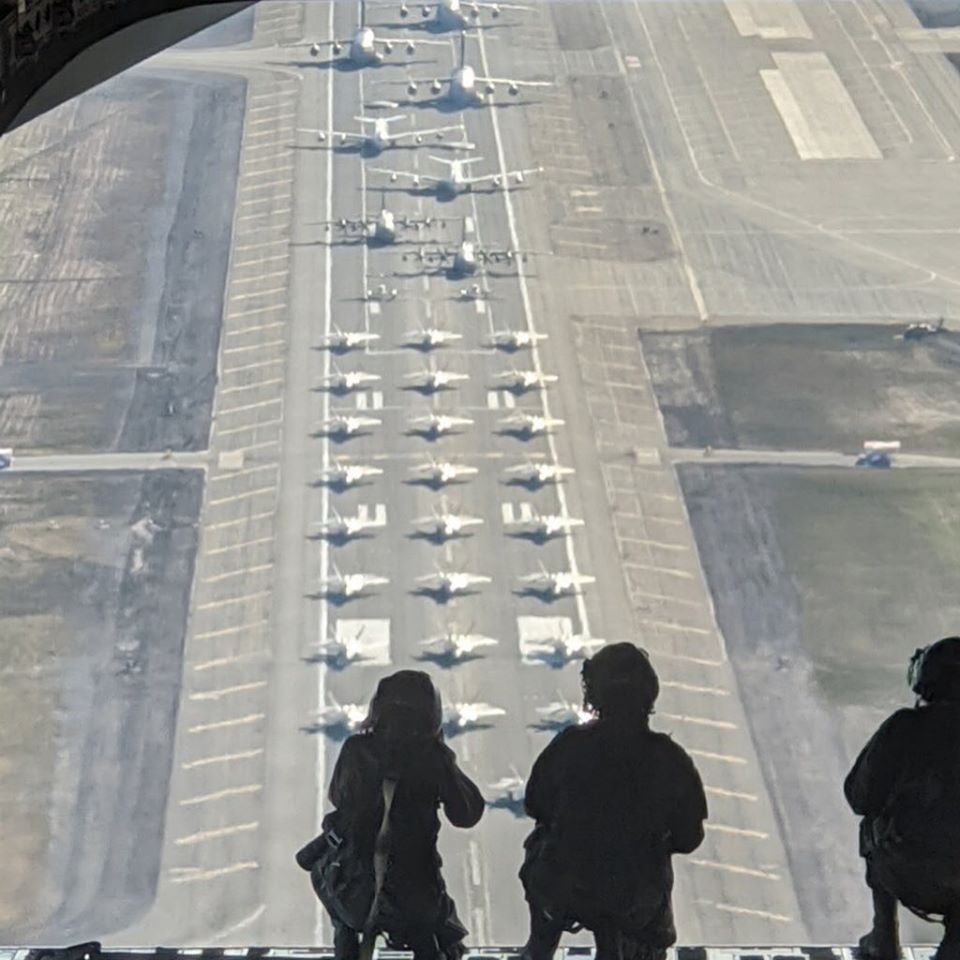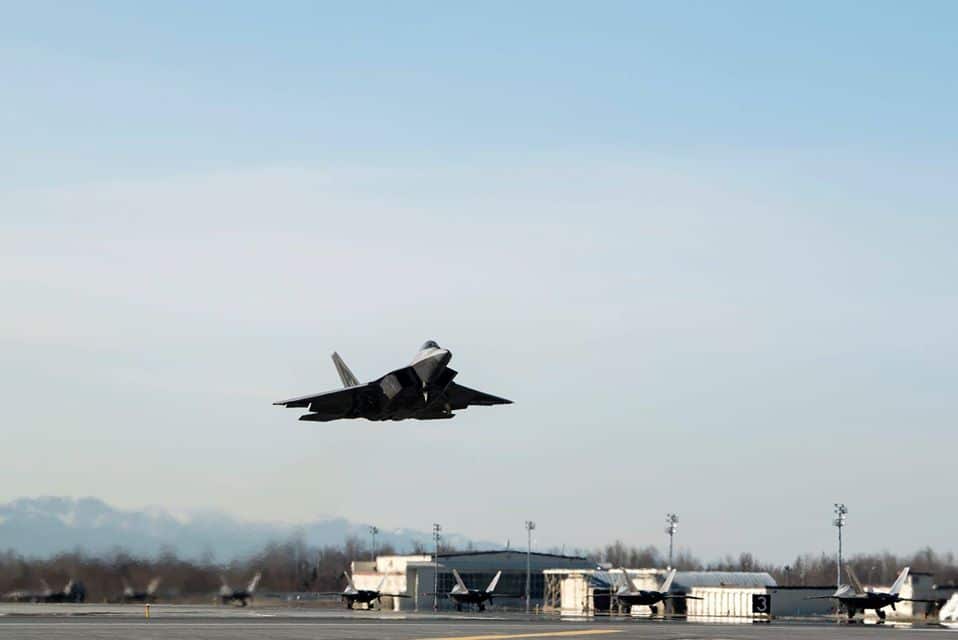United States Air Force aircraft gathered for a massive display at Joint Base Elmendorf-Richardson in Richardson, Alaska to conduct an elephant walk on May 5, 2020.
The display consisted of at least 26 F-22 Raptors fighter jets, as well as C-17 Globemaster IIIs, E-3 Sentrys, C-12F Hurons, C-130J Super Herculeses and HH-60G Pave Hawks from the 3rd Wing, 176th Wing, and 477th Fighter Groups.
An elephant walk is an Air Force term for when military aircraft taxi in close formation on the runway right before takeoff. It typically takes place right before a Minimum Interval Takeoff.
The term “elephant walk” is a World War II-era term. When allied bomber operations consisted of 1,000 aircraft, their attacks were carried out in a single file, nose-to-fail fashion that resembled elephants traveling to the watering hole.

F-22 Raptors assigned to Joint Base Elmendorf-Richardson, Alaska, perform an Elephant Walk on the flight line on May 5, 2020 to show readiness during the COVID-19 pandemic. (U.S. Air Force/Released)
JBER’s Elephant Walk has been affectionately dubbed “Moose Walk” in a nod to the Alaskan wildlife, as well as the C-17 Globemaster III which is nicknamed “The Moose.”
Like other close formation exercises, elephant walk exercises are performed to display the units’ capability and teamwork. It is often performed to prepare squadrons for wartime operations, as well as to prepare pilots for the launching of fully armed aircraft in one mass event.

F-22 Raptors assigned to Joint Base Elmendorf-Richardson, Alaska, perform an Elephant Walk on the flight line on May 5, 2020 to show readiness during the COVID-19 pandemic. (U.S. Air Force/Released)
“Our Airmen are proud to provide world-class airpower for America,” said U.S. Air Force Col. Robert D. Davis, 3rd WG commander. “Events like this, as well as other exercises, provide a visible and meaningful result of the hard work and synchronization required to project airpower. They also demonstrate the U.S. Air Force’s responsiveness, flexibility and global reach.”
This exercise, in particular, was a joint effort between active Air Force and Alaska Air National Guard wings.

F-22 Raptors assigned to Joint Base Elmendorf-Richardson, Alaska, perform an Elephant Walk on the flight line on May 5, 2020 to show readiness during the COVID-19 pandemic. (U.S. Air Force/Released)
“It provides an opportunity for multiple air components to coordinate and build familiarity across organizations and ensure operational synergy,” said Col. Anthony D. Stratton, the 176th WG commander. “This type of event provides a defined objective which gives an opportunity for both our junior and experienced troops to apply their skills, and culminates in an event that visibly presents the results of their hard work.

F-22 Raptors assigned to Joint Base Elmendorf-Richardson, Alaska, perform an Elephant Walk on the flight line on May 5, 2020 to show readiness during the COVID-19 pandemic. (U.S. Air Force/Released)
The display takes place during the coronavirus pandemic and serves as a message to the world that U.S. forces remain ready to deploy quickly.



